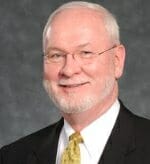
The Changes You Face Now Are Different From the Changes in the Past
We’re well-equipped, in higher education, to meet technical change head-on. We’re often less well-equipped for adaptive change. This is a distinction Ron Heifetz drew, first in his thought-provoking book Leadership without Easy Answers (1998) and later with Martin Linsky in Leadership on the Line (2002).
With technical challenges, situations arise where current knowledge, expertise and resources are enough to deal effectively. A technical problem is not necessarily trivial or simple but its solution lies within the organization’s current repertoire of resources (such as updated technology, takeaways from past experience, or decisions to invest more money or people).
With adaptive challenges, there are fewer clear answers. Adaptive challenges cannot be solved with current knowledge and expertise, but require experimentation, risk taking, creativity and the ability to use “failures” as learning opportunities.
The problem is that we too often treat adaptive challenges as technical ones.
On top of this, many people tend to resist or deny adaptive challenges (e.g., Khan Academy, MOOCs, mobile technology in the classroom) because these challenges could dramatically change the way they think and act. Often, these people expect their leaders to come up with the solutions to the adaptive challenges because that’s their job. Unfortunately, leaders will be unable to do this because they will need a collaborative and collective approach to solution finding that will authentically engage multiple stakeholders across their campuses. The challenge is: how do you actually do that?
We need to start by grounding ourselves in three critical suppositions, understand how adaptive change requires a different leadership skill set, and then have the critical conversation needed to shape that skill set and move our institutions forward.
3 Critical Suppositions
When you, as leaders, face adaptive challenges, you need to start with these three suppositions:
- Complexity and ambiguity will be the new normal. There are no easy answers anymore; only the tough, complex and sticky challenges remain.
- The pace of change will continue to increase over time.
- Leaders will have to be able to “foster adaptation,” (Heifetz & Linsky, 2002) and help their people develop “next practices” that will enable their organizations to thrive in a complex environment. Resilience, agility and a tolerance for ambiguity will be essential leadership qualities.
A Different Leadership Skill Set
ADAPTIVE LEADERSHIP
“The organizational adaptability required to meet a relentless succession of challenges is beyond anyone’s current expertise. No one in a position of authority – none of us in fact – has been here before.” (Heifetz, Graham & Linsky 2009)
“Often organizations try and discourage or minimize differences but that only stifles the free flow of ideas and the rich discussion innovation needs.” (Hill, Branden, Trulove & Lineback 2014)
The core leadership qualities of character, integrity, competence and compassion will remain but, in a rapidly changing world filled with pervasive complexity and ambiguity, leaders will also have to:
- Build cross-cultural bridges with diverse groups in service of their institution’s mission and values to identify best practices and the share expertise across the campus and beyond. This will include transferring knowledge across institutional boundaries and silos to meaningfully involve campus stakeholders so that they can help produce creative solutions to complex campus issues (e.g., student retention; branding; visioning; student debt).
- Create a sense of authentic community across their campus. This goes beyond “school spirit,” toward a deep sense of shared values and a sense of purpose.
- Deal with complex and thorny issues in a way that brings people together rather than polarizing them.
- Understand the power of true collaboration and how difficult it is to achieve.
- Have the courage to take intelligent risks and try creative and different approaches to solving campus problems and challenges.
- Tolerate ambiguity and a little “messiness.” As campus stakeholders share ideas, and even disagree about issues and approaches, it can get messy. With collaborative practices, there is a great deal of trial and error, and mistakes will be made as people work together to create coherent solutions, share best practices and work together on common goals. As leaders, you will need the emotional capacity and resilience to tolerate uncertainty, frustration, even pain.
- Admit you don’t have all the answers and help create the opportunities that will engage people’s thinking, stimulate creativity and innovation and even make us confront our deeply held beliefs and assumptions.
- Support collective and coherent action toward shared goals, including actually implementing the campus strategic plan. The track record for implementing strategic plans is dismal. Often they are well written, but when it comes to execution, not much is achieved (Bossidy & Charan, 2002; Hrebiniak, 2005, 2013; Kezar & Lester, 2009). Collaborative practices can build a genuine commitment to implementation and execution (Sanaghan 2009).
- Help other campus leaders make better decisions, utilizing multiple perspectives, experience and information when seeking coherent solutions to tough challenges and issues.
- Identify the “synergistic” opportunities that are often dormant or hidden and elevate them so they can be acted upon.
- Avoid redundant efforts, which are unavoidable unless people throughout the campus understand what other people are doing in their silos, divisions and departments.
You will need to consciously and deliberately develop the capacity and resourcefulness of people throughout your campus, push responsibility down where it belongs and understand that the collaborative intelligence of your people is one of the most powerful strategic assets you possess. Hansen (2009); Kanter (1989); Adler, Heckscher & Prusak (2011); Sanaghan & Aronson (2009); McChesry, Covey & Huling (2012); Sanaghan (2009).
Resources for Further Reading
Adler, Paul, Charles Hecksher, and Laurence Prusak. 2011. “Building a Collaborative Enterprise.” Harvard Business Review 89, no. 7/8: 94-101
Bossidy, Larry, Ram Charan, and Charles Burck. 2011. Execution: the discipline of getting things done. London: Random House Business.
Bryan, L.L., E. Matson, and L.M. Weiss. 2007. “Harnessing the power of informal employee networks”. The McKinsey Quarterly. (4): 44-55.
Chrislip, David D. 2002. The collaborative leadership fieldbook: a guide for citizens and civic leaders. San Francisco: Jossey-Bass.
Farson, Richard Evans, and Ralph Keyes. 2002. Whoever makes the most mistakes wins: the paradox of innovation. New York: Free Press.
Garvin, David A., and Michael A. Roberto. 2001. “What You Don’t Know About Making Decisions.” Harvard Business Review 79, no. 8: 108-116.
Gulati, Ranjay. 2007. “HBR Spotlight – Customer Focus – Silo Busting: How to Execute on the Promise of Customer Focus”. Harvard Business Review. 98.
Hansen, Morten T. 2009. Collaboration: how leaders avoid the traps, create unity, and reap big results. Boston, MA: Harvard Business Press.
Hansen, Morten T., and Nitin Nohria. 2004. “How To Build Collaborative Advantage. (cover story).” Business Source Elite.
Heifetz, Ronald, Alexander Grashow, and Marty Linsky. “Leadership in a (Permanent) Crisis.” Harvard Business Review 87, no. 7/8 (July 2009): 62-69.
Heifetz, Ronald Abadian, and Martin Linsky. 2008. Leadership on the line: staying alive through the dangers of leading. Boston: Harvard Business School Press.
Hill, Linda A. 2014. Collective genius: the art and practice of leading innovation. Boston, Mass: Harvard Business Review Press.
Hrebiniak, Lawrence G. 2013. Making strategy work: leading effective execution and change. Upper Saddle River, New Jersey: FT Press.
Hutt, Michael D., et al. “Defining the Social Network of a Strategic Alliance.” Sloan Management Review 41, no. 2 (Winter2000 2000): 51-62.
Ibarra, Herminia, and Morten T. Hansen. 2011. “Are You a Collaborative Leader?.” Harvard Business Review 89, no. 7/8: 68-74.
Kanter, Rosabeth Moss. 1989. “Becoming PALs: Pooling, Allying, and Linking Across Companies.” Academy Of Management Executive (08963789) 3, no. 3: 183-193.
Kezar, Adrianna J., and Jaime Lester. 2009. Organizing higher education for collaboration: a guide for campus leaders. San Francisco, CA: Jossey-Bass.
Kim, W. Chan, and Renee Mauborgne. 1997. “Fair Process: Managing in the Knowledge Economy.” Harvard Business Review 75, no. 4: 65-75.
Klein G. 2008. “Performing a project premortem”. IEEE Engineering Management Review. 36 (2): 103-104.
McChesney, Chris, Sean Covey, and Jim Huling. 2012. The 4 disciplines of execution: achieving your wildly important goals. London: Simon & Schuster.
Mintzberg, Henry. 2013. Simply Managing: What Managers Do–And Can Do Better. San Francisco: Berrett Koehler.
Pfeffer, Jeffrey, and Robert I. Sutton. “The Smart-Talk Trap.” Harvard Business Review 77, no. 3 (May 1999): 134-142.
Raelin, Joseph A. 2003. Creating leaderful organizations: how to bring out leadership in everyone. San Francisco: Berrett-Koehler Publishers.
Sanaghan, Patrick, Larry Goldstein and Susan Jurow. 2001. “A Learning Agenda for Chief Business Officers.” Business Officer Magazine.
Sanaghan, Patrick, and Paulette A. Gabriel. 2011. Collaborative leadership in action: a field guide for creating meetings that make a difference. Amherst, Mass: HRD Press.
Sanaghan, Patrick, and Nancy Aronson. 2009. Deep lessons on collaboration: how collaboration really works. Bloomington: Xlibris Corp.
Sanaghan, Patrick, and Susan Jurow. 2011. “Who Will Step Into Your Shoes?” Business Officer 44, no. 10: 16-24.
Sanaghan, Patrick. “10 Critical Lessons I’ve Learned About Implementing a Strategic Plan.” Academic Impressions: Higher Ed Impact: Dec 2014.
Spillane, James P. 2006. Distributed leadership. San Francisco: Jossey-Bass.
Thomson, Ann Marie, and James L. Perry. 2006. “Collaboration Processes: Inside the Black Box.” Business Source Elite,
Weiss, Jeff, and Jonathan Hughes. 2005. “Want collaboration? Accept–and actively manage–conflict.” Harvard Business Review 83, no. 3: 92.


